
The history of birth control began with when humans first figured out that Tab ♂+ Slot ♀ = Baby, and attempted to challenge that equation. Birth Control is a regimen of one or more actions, devices, sexual practices, or medications followed in order to deliberately prevent or reduce the likelihood of pregnancy or childbirth for married couples and sexually active individuals. There are 3 forms of birth control viz prevention of fertilization, prevention of implantation and abortion. However out of the methods yet available, only a few score high in popularity due to the displeasure they might cause. Several forms of latest birth control methods are in pipeline which would be more effective and easier to use. While some women’s products are in development, the real future of birth control is men to control the massive sperm army unleashed. Contraceptives for guys could help women avoid the side-effects of hormonal pills and give men more control over their fertility. Here is preliminary showing into the future of contraception.
10. SILCS Diaphragm
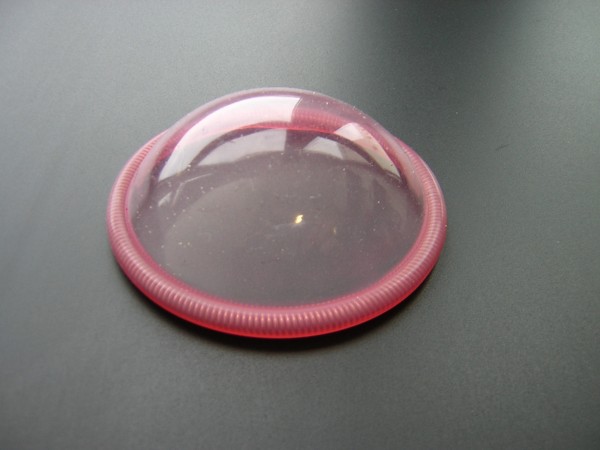
Wikipedia
The SILCS diaphragm is a silicone barrier contraceptive device which is inserted vaginally to cover the cervix. Its dome is filled with BufferGel that acts both as a spermicide and microbicide that not only immobilizes the sperms but also kills them and fights infections. It functions identically to a normal contraceptive diaphragm, but avoids the need for many sizes and a pelvic exam for a correct fit; it is designed as a “one size fits most” device. The designers of the device relied heavily on results from studies of current and former diaphragm users and clinicians to improve acceptability and satisfaction. Women are evaluating the new device for comfort and ease-of-use in studies, underway in the Dominican Republic, South Africa, Thailand, and the United States.
9. Biodegradable Time Releasing Contraceptive Implant

IEEE
Implanon is a newer birth control implant, receiving a very recent FDA-approval. This contraceptive implant is a thin rod, 40 mm in length and 2 mm in diameter — about the size of a cardboard matchstick. It’s made from a flexible plastic and is inserted just under the skin on the inner side of your upper arm. Implanon is a progestin-only method and provides about 3 years of pregnancy protection. Insertion requires a local anesthetic and only takes a few minutes. The implant can also be removed anytime before the 3 years are up. Implanon does not contain latex or silicone and will not dissolve, so it must be removed. Implanon continually releases a low dose of etonogestrel (a progestin) to protect against pregnancy for up to 3 years. After the third year, Implanon will still release some hormone, but it will not be enough to prevent pregnancy. Recently in pipeline is a biodegradable contraceptive Implant that does not require surgical removal, consists of long-acting contraceptive capsule-type implant- CaproF .
8. Hydrothermal Male Control

Wikipedia
Sperm are best produced at a temperature slightly below body temperature. The muscles around a male’s scrotum involuntarily tighten if the man’s body temperature drops, and they loosen, allowing the testes to hang, if the body temperature rises. This is the body’s way of keeping the sperm at an ideal temperature. Limited research has shown that raising the temperature of the scrotum above body temperature, even for short periods of time, can affect fertility for months. An experimental male contraceptive method involves heating the testicles so that they cannot produce sperm. Methods used include hot water applied to the scrotum, heat generated by ultrasound, and artificial cryptorchidism (holding the testicles inside the abdomen) using specialized briefs. Initial experiments suggest it is effective, safe, and reversible, though there have not been long-term studies to determine if it has any side effects on the body or quality of sperm after reversal. The optimal heat level and time period of exposure are not known. The method has a long history in Middle Eastern countries, particularly Turkey.
7. R.I.S.U.G

Wikipedia
Reversible Inhibition of Sperm Under Guidance ( RISUG ), is the development name of a male contraceptive developed at IIT Kharagpur in India by Dr. Sujoy K Guha. It is currently undergoing Phase III clinical trials in India. It has been patented in India, China, Bangladesh and the United States. RISUG works by an injection into the vas deferens, the vessel through which the sperm moves before. In a matter of minutes, the injection coats the walls of the vas with a clear gel. The differential charge from the gel ruptures the sperm’s cell membrane as it passes through the vas, stopping the sperm before they can even start their journey to the egg.
6. Anti-Fertility Vaccines

NIH
Anti Fertility or the Contraceptive vaccines ( CVs) may provide viable and valuable alternatives that can fulfill most, if not all, properties of an ideal contraceptive. Since both the developed and most of the developing nations have an infrastructure for mass immunisation, the development of vaccines for contraception is an exciting proposition. The molecules that are being explored for CV development either target gamete production (GRH, FSH and LH), gamete function (ZP) or gamete outcome (hCG). Disadvantages of CVs targeting gamete production are that they affect sex steroids and/or show only a partial effect in reducing fertility. CVs targeting gamete function are better choices. Vaccines based on ZP proteins are quite efficacious in producing contraceptive effects. However, they invariably induce oophoritis affecting sex steroids. Sperm antigens constitute the most promising and exciting targets for CVs. Several sperm-specific antigens have been delineated in several laboratories and are being actively explored for CV development. Antisperm antibody-mediated immunoinfertility provides a naturally occurring model to indicate how an antisperm vaccine will work in humans. Vaccines targeting gamete outcome primarily focus on the hCG molecule. The hCG vaccine is the first vaccine to undergo phase I and II clinical trials in humans. Both the efficacy and the lack of immunotoxicity have been reasonably well demonstrated for this vaccine.
5. Contraction Inhibitor Pill “Dry Orgasm”
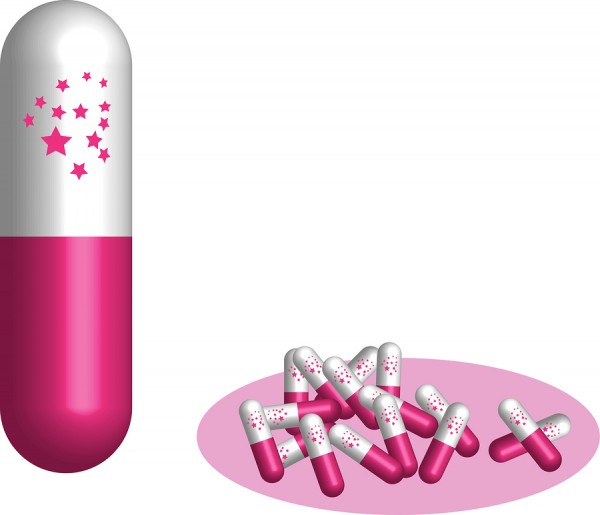
Male Contraceptives
Doctors have known since the 1950s that a couple of medications, usually taken for high blood pressure and schizophrenia, could also make male patients sterile. In November 2006, researchers figured out why: Both medications freeze the muscle contractions that propel sperm through the male reproductive tract. The result: A normal orgasm, sans sperm. Work is underway to turn this discovery into a marketable pill, but it’s still a long way off.
4. Adjudin “The male Patch”

Wikipedia
Adjudin is a drug which is under development as a potential non-hormonal male contraceptive drug, which acts by blocking the maturation of sperm in the testes, but without affecting testosterone production. In experiments hormonal levels (FSH, LH, testosterone) were undisturbed during administration, and normal spermatogenesis returned in 95% of the tubules of rats at 210 days after the drug had been discontinued. The oral dose effective for contraception is so high that there have been side effects in the muscles and liver, therefore the drug is being manufactured as implant or patch for males.
3. Spray-On Contraceptive
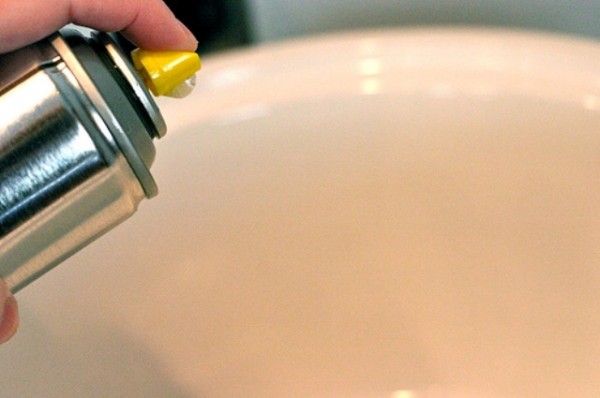
Dailymail
Contraceptives can be problematic: condoms break, pills are forgotten and patches itch. Now Australian biotech company Acrux has come up with a world first — a contraceptive spray for women. Melbourne-based Acrux recently announced positive results in clinical trials of the skin spray, working with international research organisation, The Population Council. The spray uses Acrux’s patented Metered Dose Transdermal System (MDTS) to administer a pre-set dose of the contraceptive Nestorone to the skin. The fast-drying spray allows Nestorone to be gradually absorbed into the bloodstream. Unlike older contraceptive methods, the spray is suitable for breastfeeding mothers and women who cannot tolerate contraceptive pills with oestrogens. It also has a more flexible dosing time compared with progestogen-only pills, leaves no visible residue on the skin and causes much less irritation than patches.
Another German Company Jolly Joe has created a spray-on male condom that releases liquid latex from a hard plastic tube. Currently the latex takes 2-3 minutes to dry, much too long for those of us that specialize in 5-10 second condom to penis turnover time. But don’t give up on the Jolly Joe yet, the company plans to introduce a version that will dry in less than 10 seconds sometime.
2. CatSper Blocker
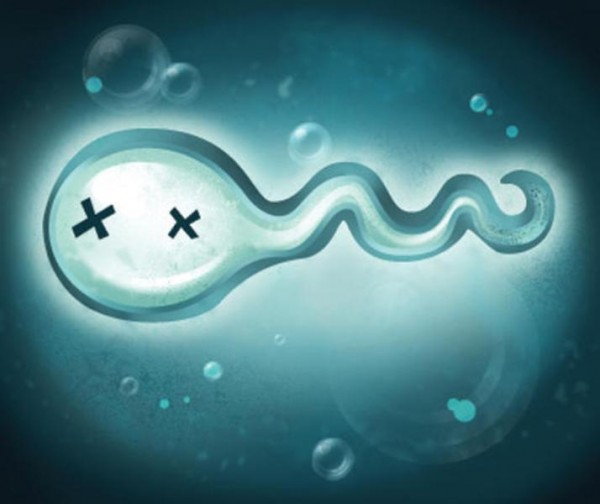
BJMU
Researchers have discovered a gene key to sperm speed–a finding they say could spawn new methods of male and female contraception or, on the opposite end of the spectrum, treatments to boost male fertility. The gene controls a channel on the tails of sperm that appears to allow calcium ions to pass through. Sperm rely on calcium ions to function properly. The new findings–based on research in mice–suggest that this sperm-tail ion channel is required for full sperm mobility and fertilization. Humans have their own version of the ion-channel gene, which the researchers have dubbed CatSper . A defect in the human CatSper gene could be behind some cases of male infertility, although that has yet to be proven, the study’s lead author, Dr. David E. Clapham, told Reuters Health. On the other hand, blocking normal CatSper action could prove to be an effective form of birth control, according to Clapham. He speculated that men or women could take this potential CatSper “blocker” because it could be made to act ”wherever sperm are present.” Moreover, they report, the gene appears to be active only in fully developed sperm, which means blocking or boosting its action could have few or no side effects.
1. The Male Pill
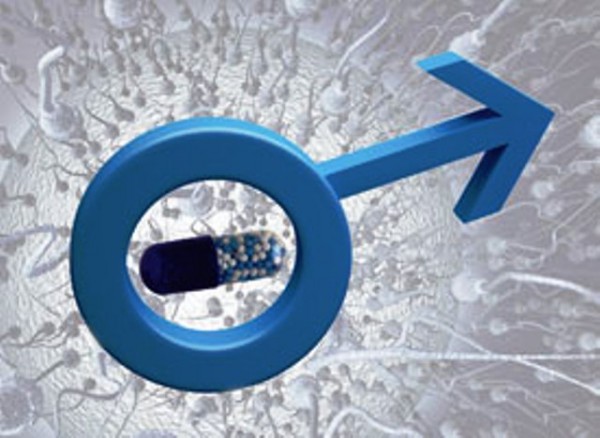
Askmen
In 1960, an invention revolutionized female sexuality and paved the way for the women’s liberation movement. It was the birth-control pill , or simply “the pill” as it became popularly known. For four decades, the pill has put women primarily in the contraceptive driver’s seat. But an increasing number of people — both men and women — want men to take a more active role in contraception use. Their wish may be granted in the foreseeable future, as research companies grow closer to revealing the first continuous, reversible male contraceptive pill. Researchers at Edinburgh University’s Centre for Reproductive Biology have finally found a way to suppress daily sperm production while maintaining normal testosterone levels. This was not an easy task given that men emit millions of sperm in each, while women only produce one egg per month. The pill has proven to be 100% effective in preliminary clinical trials and is completely reversible. The pill contains desogestrel, a synthetic hormone that is the main component in the female pill, as well as the male hormone testosterone. This combination blocks the production of sperm while maintaining male characteristics and sex drive. As with the female contraceptive pill, it must be taken daily. In terms of effectiveness, the male pill seems to be the best. In clinical trials, all of the participants’ sperm counts dropped to zero, which means that the male pill would be more effective than the condom and even the female pill.